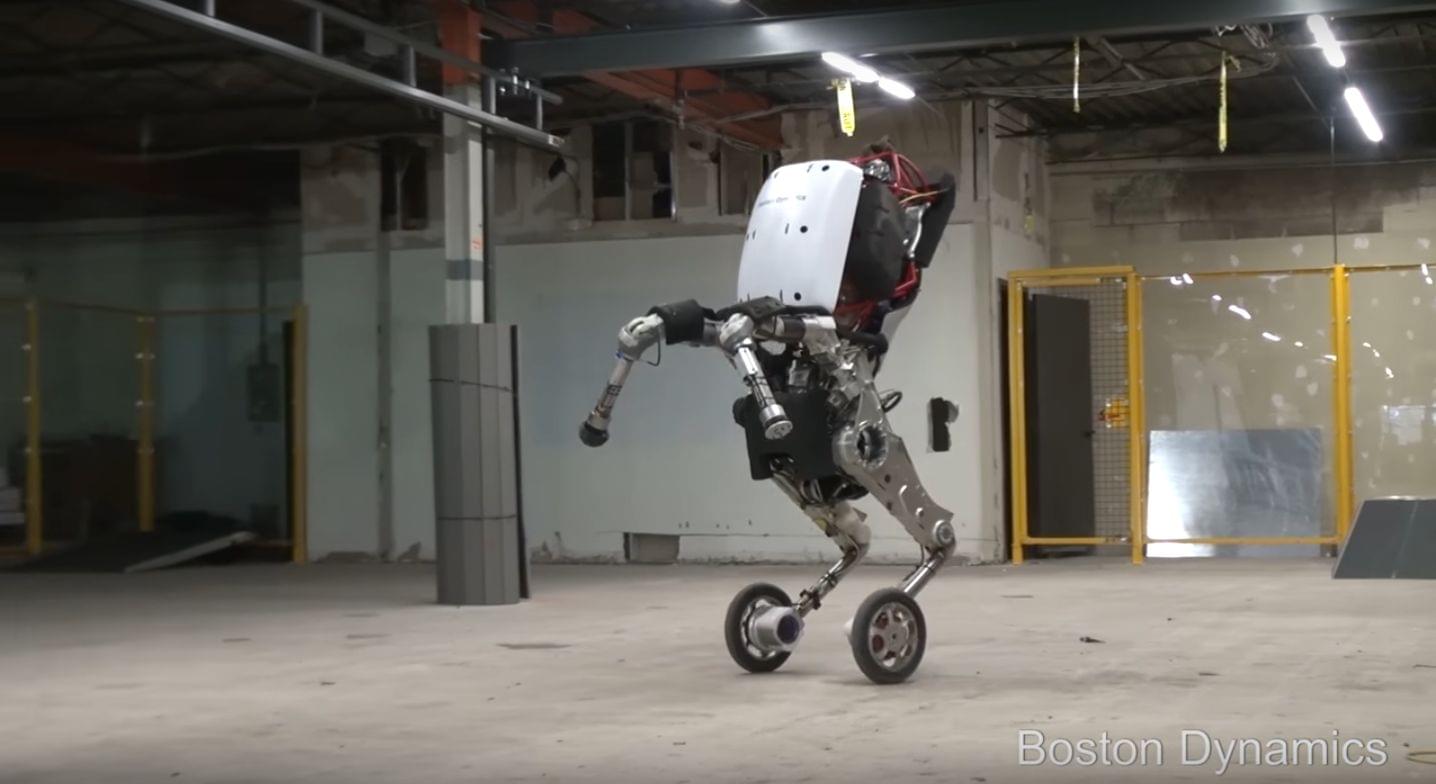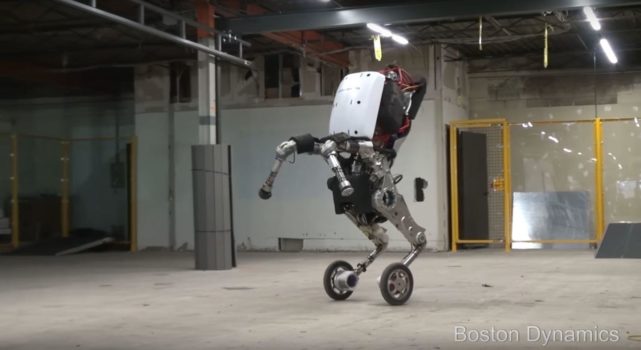
When Boston Dynamics introduced its massively upgraded Atlas last year, we said the robot could “do things we’ve never seen other robots doing before, making it one of the most advanced humanoids in existence.” But now, after seeing the video that Boston Dynamics just released to officially unveil its newest creation, Handle, a sort of Atlas on wheels, we’ll just say it again: Handle can do things we’ve never seen other robots doing before, making it one of the most advanced humanoids in existence.
“Wheels are a great invention,” Marc Raibert, founder and president of Boston Dynamics, tells IEEE Spectrum, adding that Handle, which uses a wheel-leg hybrid system, “can have the best of both worlds.”
You probably saw footage of Handle a few weeks ago, when Raibert gave a talk in California and someone filmed the screen with a phone and posted it on YouTube. When we asked Boston Dynamics about the leaked video, the company said it wasn’t ready to discuss the new robot and suggested that we wait. Now, finally, we have more details about Handle, and Raibert even answered a few of our questions on why and how they built the robot.
Boston Dynamics says Handle is an “R&D robot,” so although it can perform a number of useful tasks, like carrying 45-kilogram crates, it probably won’t be commercially available anytime soon. Handle has a range of 24 kilometers on a battery charge, which is much more than what it would be able to cover with traditional bipedal robot locomotion. Using wheels also helps reduce the number of degrees of freedom, and the company says Handle is “significantly less complex” than some of the quadruped and biped robots that preceded it.
Indeed, this kind of multi-modal locomotion is highly effective. In a much more limited capacity, it’s what helped DRC-HUBO win the DARPA Robotics Challenge Finals: Being able to use both wheels and legs helps your robot efficiently adapt to different situations, trading the ability to traverse rough terrain for speed (and stability, which legged robots can have trouble with) and back again whenever necessary, just like you would as a human with a pair of rollerblades.
Teaching bipeds to move like this seems like an idea with a lot of potential, especially if Boston Dynamics can develop a generalized controller that allows robots with regular legs to take advantage of wheels—imagine the next generation of Atlas being equipped with an integrated pair of roller shoes like Heelys. We’re not sure if that’s part of the company’s plans, but here’s what Raibert told us about Handle and his team’s experience using wheels after famously building so many legged robots.
IEEE Spectrum: How did the idea to build a wheeled robot come about, and how long did it take to build it?
Marc Raibert: We’ve had the idea for building a robot that combined legs with wheels for a long time, but never had the opportunity to explore it. We started last summer and had something working in about six months. We accelerated the project by using components for power, arms, and upper body that were originally designed for Atlas.
Were you able to reuse or adapt any of the bioinspired control strategies you’ve used so successfully in legged robots?
Much of the control used in Handle leverages our team’s experience with the quadruped and biped robots. The software is not exactly the same, but the balance and dynamic control principles have a lot in common and share the same physics-based roots.
Is Handle’s upper body an Atlas torso, or a completely new design? And is the robot all electric or does it use hydraulics?
Yes, it uses Atlas’ torso and a slightly modified version of Atlas’ arms. [For power we use] electric power (batteries), but both electric and hydraulic actuation.
How do you and your team feel about working with wheels after working on legged designs for so long?
Wheels are a great invention. But wheels work best on flat surfaces and legs can go anywhere. By combining wheels and legs, Handle can have the best of both worlds.
Source: Boston Dynamics

